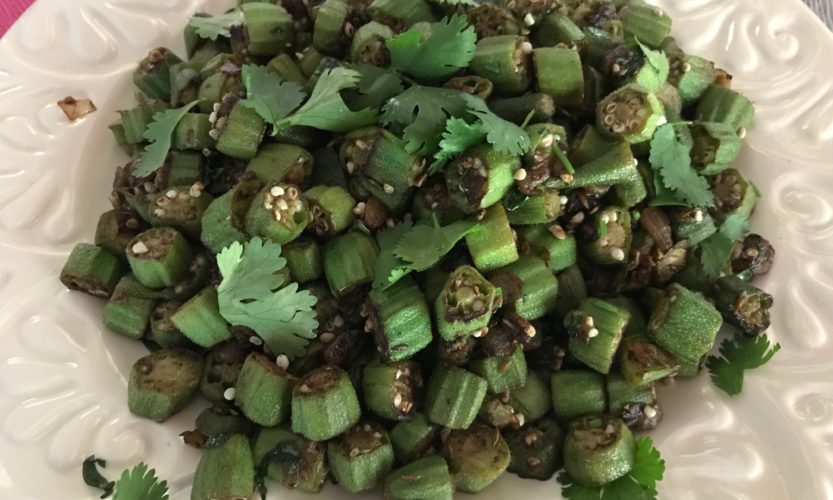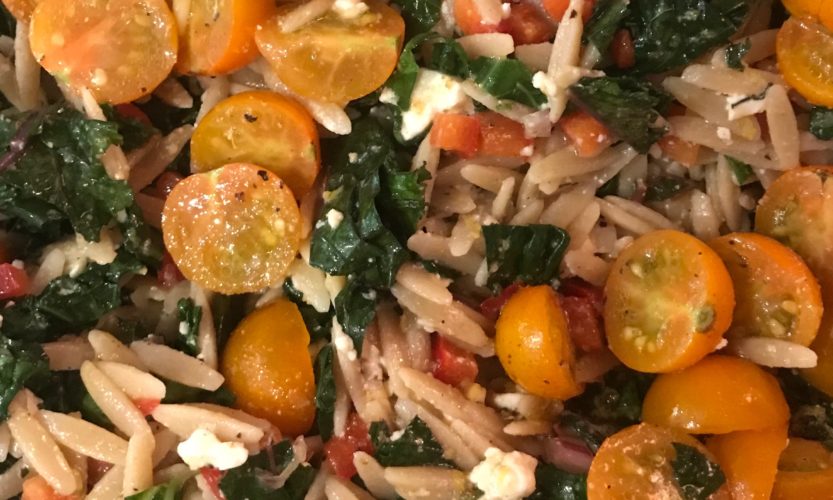Swiss Chard-Potato-Bacon Frittata

What do you do with a good crop of organic Swiss chard when you have a brunch to cook for? Well, you break out the bacon because it makes for a heavenly combination with chard, and then add potatoes for a happy threesome to pair with a load of eggs! Oh, and add some cheeses (especially goat) for some decadent flavor.
Square Foot Gardening – We’re in Love!

Several months ago I was exposed to the technique of square foot gardening, when an older edition of this book was loaned to me. Well, this approach seemed just plain weird – why bother planting everything all packed into little squares, what’s the point? And so many different things in one bed, kinda chaotically? And to bother doing the work to divide a bed up all precisely like that? Well, as they say, “Don’t knock it ’til you try it!” Now that we’ve tried it, we’ve fallen in love with it. No, not just a fly-by-night infatuation, this is true love!
Preparing the Soil – Update

Last season I wrote a post explaining how we go about preparing the soil for planting which you can find here. Well…. this is a new season, with “more water under the bridge” – and new knowledge gained through experience, the advice of experts and our own research and reflections. Therefore I want to update last year’s post with what new ways we are preparing “soil” – or better said “growing media” – to start and grow our veggies. Don’t get me wrong – most of what I said last year still stands. Where we’ve significantly changed a practice that I touted back then, I will indicate it here and in that post as well.
Veggies in the Morning Dew

So here is a picture essay, highlighting some of what we are growing now as each plant glistens in the morning dew. What could be more uplifting than to greet our seedlings and plants in the crispness and solitude of the early morning? It certainly opens our hearts to the gratitude befitting of this Thanksgiving season.
Here’s hoping you enjoy these takes, “fresh from Florida”!
HAPPY THANKSGIVING, EVERYONE!! Hope this is a time when you will enjoy the love of family and friends (and some good food too!).
Fall Gardening – Action!

It’s early November here in South Florida, prime time for planting our organic garden for the new season. We have just gotten a real break in the weather, with some cooler mornings last week (not quite cool enough for us South Floridians to get our boots and scarves out, though it’s tempting, right?) This cooling does make us enthused about being outside and getting our garden going! So, to give a rundown on how we’ve started with either seedlings or direct plantings, here goes:
Fall Season – New Gardening Strategies

As we embark upon our fall season for organic gardening, we’re implementing new strategies based upon past experiences and knowledge we’ve recently gained. Starting mid-summer, we have been solarizing our beds for the first time, using (almost) clear plastic and creating a “greenhouse effect” by tucking it in at the edges. This has minimized our weekly weeding and more importantly, has provided the heat needed to kill off the weeds and any unwanted microorganisms/pests lingering in the soil. We are especially hopeful that it will help to eliminate or at least reduce our nematode population in the soil, as discussed below.
“Dry” Okra – Quick & Flavorful!

Well, it’s summer, so you just gotta expect to find some mention of okra on a South Florida gardening blog! There are a lot of crops we’ve tried growing in the heat of summer over the years, from long beans to loofah (for real!), to bitter melon and cowpeas and various summer “spinaches,” among others. None of those are particular favorites, so we don’t put much effort into them any more. Or with certain crops that we do like, such as cowpeas and sweet potatoes, the insects they’ve attracted in our hot summers (i.e. aphids and whiteflies) make them just not worth growing.
Orzo Salad with Kale, Feta and Cherry Tomatoes

I needed a side dish for dinner, and there was a bunch of kale and a handful of cherry tomatoes (freshly picked) sitting in front of me. Remembering that I had a package of whole wheat orzo in the fridge, I googled these ingredients I had and found a great recipe to adapt for my purposes! kalynskitchen-orzo salad
So I settled on making an orzo salad with kale, feta cheese and cherry tomatoes. The original recipe called for chickpeas as well, but I didn’t think they were needed – perhaps if we weren’t having meat as the main course, I’d have been more inclined to add them. The recipe also did not call for cherry tomatoes, but I honestly think they really enhanced this dish – their sweetness added such a nice contrast of flavor to the hearty kale, the lemon, and the salty feta. I happened to have these beautiful and intensely sweet golden cherries, but red cherry tomatoes would work well too.
Last year a child in the garden walked up to the kale, pointed to a leaf and said, “This looks like a reptile.” OMG, I thought, so that must be why it’s called “dinosaur kale.” It had never dawned on me before!
This salad was so refreshing and delicious; my family loved it. It’s definitely a “keeper” that I know we will enjoy again!
Vegetables Still Growing in May

Well, it is that time of year again in our organic vegetable garden, when the crops are beginning to wither, the harvest is thinning out, and the heat is rolling in – yes, it’s May in South Florida! We are also having an extra-heavy rainfall bout, like two weeks solid of rain on a daily basis. We’ve had to say goodbye to some of our favorite crops (til next season!) – heirloom tomatoes, Chinese and regular cabbages, escarole, broccoli, dill, most of our lettuces and our delicate greens like mizuna and arugula, and our nasturtiums. The good news is that there are still many things growing in May, and a few we can still plant at this time of the year.
Steamed Vegetables with Miso Tahini Sauce

I was never particularly a fan of steamed vegetables, until I went on a special diet to improve my health a year and a half ago – which was basically eating mostly steamed organic veggies along with certain types of protein. I stuck to this diet pretty religiously as I was facing some surgeries and wanted to be in tip-top shape. Well, it worked! Within a month, I felt much stronger, had more energy and as a side effect I had lost 10 pounds! I did not set out to lose that weight, but it was a welcome bonus.
